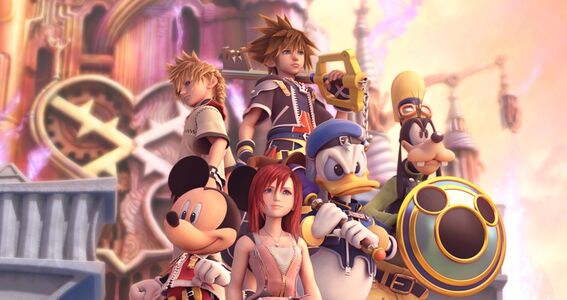
Former Nintendo employees discussed why Kirby's look is different in the U.S. compared to its original Japanese version. Read to learn more why Kirby was marketed differently to Western audiences, and Nintendo's global approach in localization.
"Angry Kirby" Was Made To Appeal To Wider Audiences
Nintendo Rebranded Kirby For More Appeal In The West

Kirby’s appearance was made fiercer and tougher on game covers and artworks to appeal more to American audiences, thus being dubbed by fans as "Angry Kirby." In an interview with Polygon on January 16, 2025, former Nintendo Localization Director Leslie Swan discussed the company’s decision to change Kirby’s look in the West.
Swan explained that in the early 2000s, Kirby was not made to look angry, but to show determination. She said, "Cute, sweet characters are popular among people of all ages in Japan." Swan added, "In the U.S., though, tween and teen boys tend to be drawn to tougher characters."
Kirby: Triple Deluxe Director Shinya Kumazaki shared with GameSpot in 2014 that cute Kirby is what "brings in the most people to play" in Japan, while "strong, tough Kirby that’s really battling hard" appeals more in the US. However, he added that it still depends on the title as Kirby Super Star Ultra had a tough Kirby on both U.S. and Japanese box art. He pointed out that they wanted to bring out Kirby’s serious side with the gameplay of Kirby games, but still recognized Kirby’s cuteness was still the biggest draw in the Japanese market.
Advertising Kirby As "Super Tuff Pink Puff"

Nintendo marketing focused on making Kirby appealing to a wider audience, especially boys, so Kirby was marketed as "Super Tuff Pink Puff" in Nintendo DS’ Kirby Super Star Ultra in 2008. Former Nintendo of America Public Relations Manager Krysta Yang said that Nintendo wanted to change its image of being an excessively "kiddie" company during her early days. "There was certainly a period of time for Nintendo, and even gaming in general, to have a more adult/cool factor" she said. Yang added that "Having a game that was labeled ‘kiddie’ was really a curse."
Nintendo’s marketing had a conscious effort to make Kirby seem tougher and to focus more on the combat of its games so that Kirby would not be seen as "something just for young kids." In recent years, Kirby’s personality has not been the focus of Nintendo, but rather more on gameplay and abilities as seen in promotional materials for Kirby and the Forgotten Land in 2022. Yang said, "There’s been a continued push to make Kirby into a more well-rounded character, but it’s true that most people still regard Kirby as cute versus tough."
Nintendo’s U.S. Localization For Kirby

The differences in localization for Kirby in Japan and the U.S. started in an infamous 1995 print ad that featured Kirby posing for a mugshot as part of Nintendo’s "Play It Loud" campaign. After several years, the box art for Kirby's games varied in terms of his facial expression. Titles like Kirby: Nightmare in Dream Land in 2002, Kirby Air Ride in 2003, and Kirby: Squeak Squad in 2006 all depicted Kirby having sharp eyebrows and mean facial expressions.
However, Kirby’s facial expression was not the only adjustment Nintendo made to make the adorable pink character more appealing to Western audiences. In 1992, Kirby’s Dreamland was released for the GameBoy and marked as the first game in the Kirby series. The game’s U.S. box art featured Kirby having a ghostly-white tone rather than his original Japanese version having a pink hue. GameBoy had a monochrome display so players in the US only saw Kirby’s original pink color when Kirby’s Adventure was released on NES in 1993. Swan said that this became an issue for them, as "A puffy pink character for boys who are trying to be cool just wasn’t going to get the sales that everybody wanted."
This eventually led Nintendo of America to change Kirby’s facial expression in U.S. box artwork to appeal to a wider audience. In recent years, Kirby’s advertising across the world has become consistent, with Kirby alternating between having a serious look or a more gleeful one.
Nintendo’s Global Approach

Swan and Yang both agreed that Nintendo has had a more global outlook in recent years. Nintendo of America is now working closer than ever with Nintendo’s Japan office to provide more consistent marketing and localization strategies. The company is steering away from regional variations such as Kirby’s box art, and avoiding situations like the 1995 Kirby "Play It Loud" advertisement.
Yang said that the global audience hasn’t changed. She explained "It was a business strategy change to have more global marketing. It’s good and bad. Being global means consistency for the brand across all regions, but sometimes there is a disregard for regional differences." However, she thinks that this may lead "to really bland, safe marketing for some of Nintendo’s products."
Game localizers think that the current trend of localization, or lack thereof, is in part due to the globalization of the industry in general, and the growth of people. Western audiences are now aware of Japanese sensibilities and taste, with some even growing up around Japanese pop culture, games, movies, manga, anime, and other forms of media.
Source:
Angry Kirby Polygon Interview 2025
Kirby: Triple Deluxe Director Shinya Kumazaki GameSpot Interview 2014



















The reverse kinda happened with Crash Bandicoot and Spyro. Their western box arts had them look very determined and tough, but their Japanese box arts depict them as a bit cutesy.